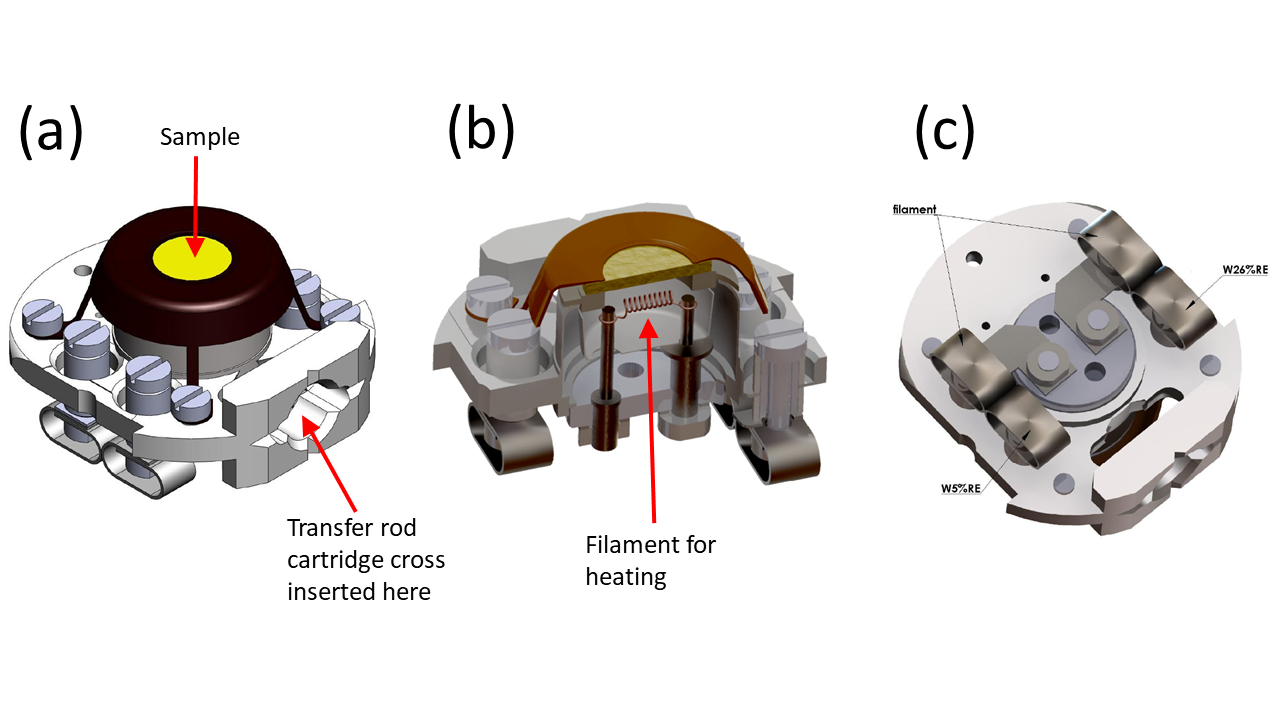Pre-beamtime checklist
Once the beamtime has been scheduled in DUO
Email the local contact for your beamtime if they haven’t made contact with you yet, and initiate a dialogue.
Create an experimental session for the beamtime in DUO, well ahead of time, and declare all samples, sources, lasers, etc. The Experimental Safety Team needs time to review this information.
Ensure your samples are compatible with the MAXPEEM sample holders - see important note below.
Make your travel arrangements, and plan to arrive one day prior to the official start of the beamtime to load a sample into the system, etc.
Assemble your on-site (and possibly, virtual also) team - see important note below.
Book accommodation - see important note below.
Consider whether the simple prep lab at the beamline is sufficient for your sample preparation needs. If not, …
Request access to a chemistry lab, if needed. The closest chemistry lab to MAXPEEM is the D3 lab (located close to the FlexPES beamline).
Discuss the feasibility of measuring on your samples (electrical conductivity, surface flatness/roughness, size, etc.) with your local contact.
Determine what samples/tools/consumables/etc. need to be shipped, to MAX IV - see note below.
Install MAXPEEM data analysis tools, and become familiar with them - see note below.
Roughly three weeks before the beamtime
Check whether an experimental session has been created in DUO.
Roughly one week before the beamtime
Create a preliminary experimental plan, and share it with your local contact.
If your experiment has non-standard requirements (e.g. laser usage, hazardous samples, hazardous gas usage, etc.), update your local contact on the progress of your preparations and inquire about the status of their preparations.
If your arrival time at MAX IV is outside of the opening hours of the reception (08.00-16.00), email reception@maxiv.lu.se to arrange for your access card to be left in a safe deposit box.
If the safety test has not been completed yet, follow these instructions to complete it.
Install the Skånetrafiken app on your smartphone, for riding the tram/bus/etc. in Lund.
Sample requirements
Warning
For sample shape and size constraints, see User Information
Bringing samples/substrates that are:
too thick,
too small or large (length x width) to fit onto the sample holder,
electrically insulating,
rough on the surface, and/or
etc.
could prematurely end your beamtime. At the least, it would lead to a poor start (cleaving substrates to fit the sample holder, additional surface preparation, etc.) If you have any concerns about sample feasibility, discuss with your local contact ASAP.
Description of the sample holder/cartridge
CAD drawings of the standard Elmitec sample holder/cartridge are shown in Figure 1. The standard Elmitec sample holder features a heating filament, four foil-based spring contacts on the underside (two for the filament, two for the thermocouple), and a thermocouple that is spot-welded to a point that’s close to the sample. The standard cartridge is made of non-magnetic materials, can be flashed up to 2000 K, and cooled down to ~100 K with liquid nitrogen.

Figure 1. CAD drawings of the Elmitec sample holder, showing (a) the fully assembled sample holder with sample, (b) a cut-away of the sample holder exposing the heating filament, and (c) the underside of the sample holder.
MAXPEEM offers an array of modified sample holders.
For better low temperature performance, a sample cartridge built from copper can be used.
For studying magnetic domains in a magnetic field, a sample cartridge with a built-in electromagnet can provide a bipolar out-of-plane magnetic field up to 72 mT.
…
User team
When planning for this beamtime, remember that your team must consist of enough people to safely and effectively use the beam 24 hours per day. We will expect all members to be sleeping, outside of the lab, for at least 6 hours out of every 24.
Between the local contact and second contact, the beamline staff aims to cover user operation for ~12 hours a day.
After the experimental session has been created in DUO, each participant must apply for their own access card.
Accommodation
MAX IV officially recommends the university guest house, which is 3 km away. Unless price is dictating the decision, we at the beamline highly recommend Forskarhotellet as the best option (100 m away, https://www.forskarhotellet.com/), followed by Motel L (1 km away, https://www.booking.com/hotel/se/motel-l-lund.en-gb.html). Bicycles are available on loan from MAX IV, or for hire from the guest house.
Experimental plan
If possible, share your (preliminary is OK) experimental plan at least a week before the beamtime with your local contact. A good format is to list the samples, in order of priority, and list the measurements to be performed on each sample. Your local contact may have suggestions, regarding the sequence of samples/measurements, that could improve the efficiency of the beamtime.
Transportation or shipping of samples/tools/supplies/etc.
If you are shipping equipment/samples/tools/etc. to MAX IV, first inform your local contact, then use the following address:
Att. name of local contact
LUNDS UNIVERSITET, MAX IV, GODSMOTTAGNING
Fotongatan 8
224 84 Lund, Sweden
Provide the tracking number to your local contact.
We recommend using DHL and similar shippers. Historically, packages shipped with Postnord have ended up at a nearby post office which isn’t too close.